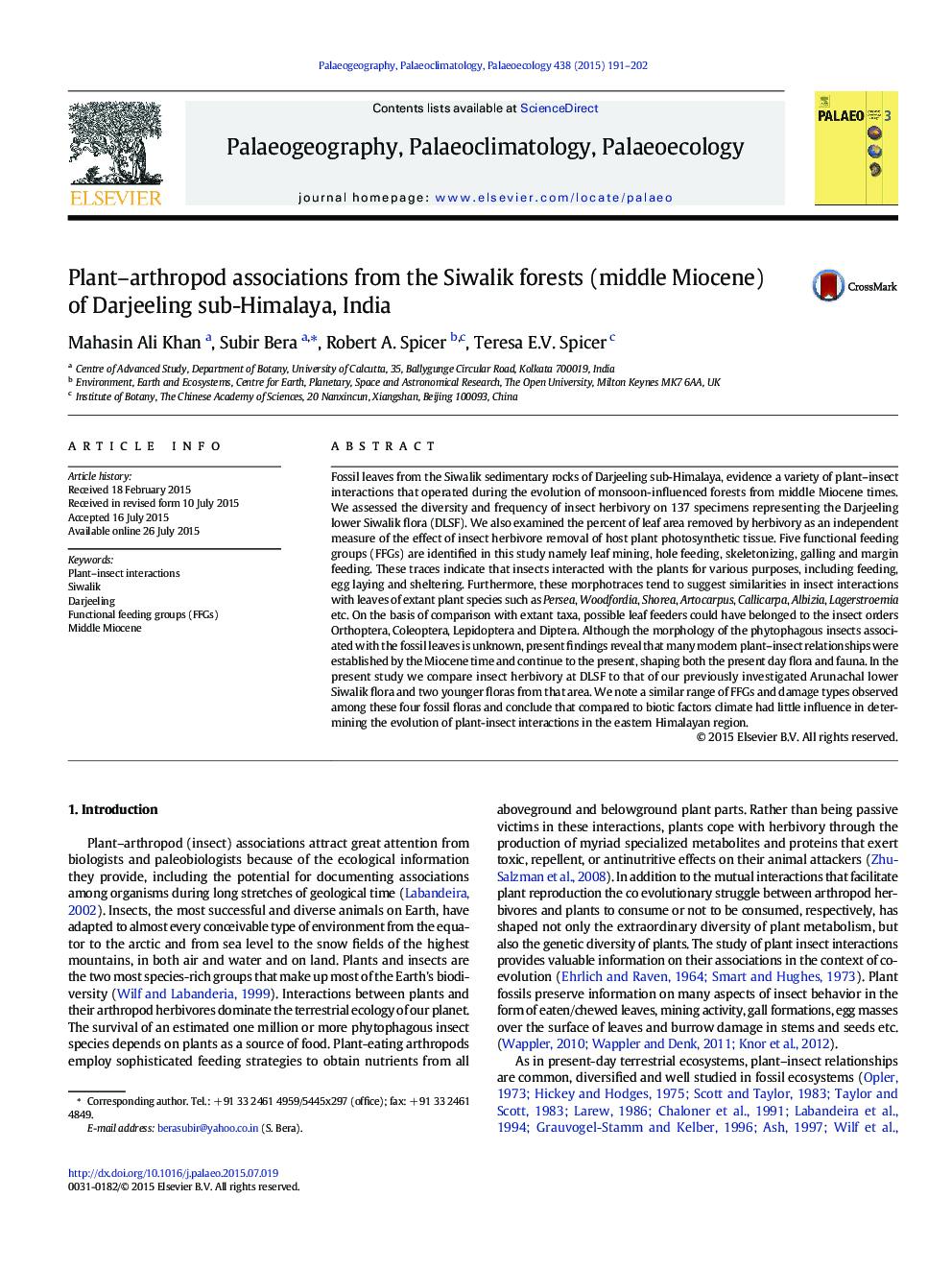| کد مقاله | کد نشریه | سال انتشار | مقاله انگلیسی | نسخه تمام متن |
|---|---|---|---|---|
| 6349624 | 1622152 | 2015 | 12 صفحه PDF | دانلود رایگان |
عنوان انگلیسی مقاله ISI
Plant-arthropod associations from the Siwalik forests (middle Miocene) of Darjeeling sub-Himalaya, India
دانلود مقاله + سفارش ترجمه
دانلود مقاله ISI انگلیسی
رایگان برای ایرانیان
کلمات کلیدی
موضوعات مرتبط
مهندسی و علوم پایه
علوم زمین و سیارات
فرآیندهای سطح زمین
پیش نمایش صفحه اول مقاله

چکیده انگلیسی
Fossil leaves from the Siwalik sedimentary rocks of Darjeeling sub-Himalaya, evidence a variety of plant-insect interactions that operated during the evolution of monsoon-influenced forests from middle Miocene times. We assessed the diversity and frequency of insect herbivory on 137 specimens representing the Darjeeling lower Siwalik flora (DLSF). We also examined the percent of leaf area removed by herbivory as an independent measure of the effect of insect herbivore removal of host plant photosynthetic tissue. Five functional feeding groups (FFGs) are identified in this study namely leaf mining, hole feeding, skeletonizing, galling and margin feeding. These traces indicate that insects interacted with the plants for various purposes, including feeding, egg laying and sheltering. Furthermore, these morphotraces tend to suggest similarities in insect interactions with leaves of extant plant species such as Persea, Woodfordia, Shorea, Artocarpus, Callicarpa, Albizia, Lagerstroemia etc. On the basis of comparison with extant taxa, possible leaf feeders could have belonged to the insect orders Orthoptera, Coleoptera, Lepidoptera and Diptera. Although the morphology of the phytophagous insects associated with the fossil leaves is unknown, present findings reveal that many modern plant-insect relationships were established by the Miocene time and continue to the present, shaping both the present day flora and fauna. In the present study we compare insect herbivory at DLSF to that of our previously investigated Arunachal lower Siwalik flora and two younger floras from that area. We note a similar range of FFGs and damage types observed among these four fossil floras and conclude that compared to biotic factors climate had little influence in determining the evolution of plant-insect interactions in the eastern Himalayan region.
ناشر
Database: Elsevier - ScienceDirect (ساینس دایرکت)
Journal: Palaeogeography, Palaeoclimatology, Palaeoecology - Volume 438, 15 November 2015, Pages 191-202
Journal: Palaeogeography, Palaeoclimatology, Palaeoecology - Volume 438, 15 November 2015, Pages 191-202
نویسندگان
Mahasin Ali Khan, Subir Bera, Robert A. Spicer, Teresa E.V. Spicer,